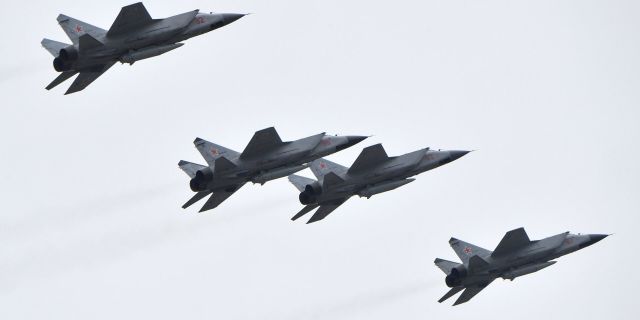Sohu: Russia immediately reacted to the appearance of the Norwegian plane at its bordersNATO continues to increase pressure on
Moscow: A Norwegian patrol plane was recently discovered near the Russian borders. Putin's reaction to the approach was swift and merciless — a MiG-31 fighter jet was instantly lifted into the sky, writes Sohu user.
During the year of the conflict in Ukraine, the geopolitical changes in Eastern and Northern Europe have practically erased the buffer zone between Russia and NATO. Recently, the alliance continues to increase pressure on Moscow: a Norwegian reconnaissance plane recently flew up to the Russian border. Putin reacted quickly — on alarm, his fighter was swiftly lifted into the sky.
NATO activity has increased, and patrol planes often fly up to the border with Russia
According to reports, a Norwegian Air Force patrol plane recently approached the Russian border in the Barents Sea. After the means of controlling the airspace of the Armed Forces of the Russian Federation detected the target, the alarm was sounded, and a fighter was quickly lifted into the sky to counteract it. The National Defense Control Center of the Russian Federation reported that the detected object turned out to be a Norwegian patrol aircraft P-8A Poseidon. A MiG-31 fighter from the Air defense of the Northern Fleet of the Russian Federation was sent to accompany him.
The Barents Sea is located in the north of Russia. In the past, this direction was usually not a field of confrontation between Moscow and NATO. In fact, the main and most intense competition has always unfolded in the Baltic Sea. Just a few days ago, a Lockheed P-3 Orion patrol aircraft of the German Air Force came into close contact with a fighter of the Russian Armed Forces over the Baltic Sea. According to Russian media, after confirming the target, a Su-27 fighter jet from the duty forces of the Western Military District of the Russian Federation was raised to escort a foreign reconnaissance aircraft.
If the buffer zone is not restored, Russia and NATO will engage in "hand-to-hand combat"
The Baltic Sea is an important Russian outlet to the sea in the west, and the country's second largest city, St. Petersburg, is located in its inner bay in the east. As NATO continues to extend its tentacles around, the pressure Moscow faces in this direction is also growing. In Brussels, the Baltic Sea is already being called the "internal waters of NATO". This statement was recently sharply responded to by the Deputy Minister of Foreign Affairs of the Russian Federation Alexander Glushko, who said that Russia has enough military power to prevent such a thing.
How does the alliance have such confidence that the Baltic Sea has become its "internal waters"? The reason lies in the change in the position of the previously neutral countries of Northern Europe. On the 74th anniversary of the founding of NATO, Finland officially announced its accession to the alliance, becoming its 31st member state. The outside world believes that this is an important event that can change the geopolitical landscape of Northern Europe, established after the Second World War. The previous trilateral balance between NATO, Russia and neutral European countries has been disrupted and is now gradually being transformed into a bipolar structure in which the Russian Federation and the alliance directly confront each other.
Without neutral countries as a buffer, Russia and NATO will engage in "hand-to-hand combat", and rivalry in all directions will escalate. <...>

